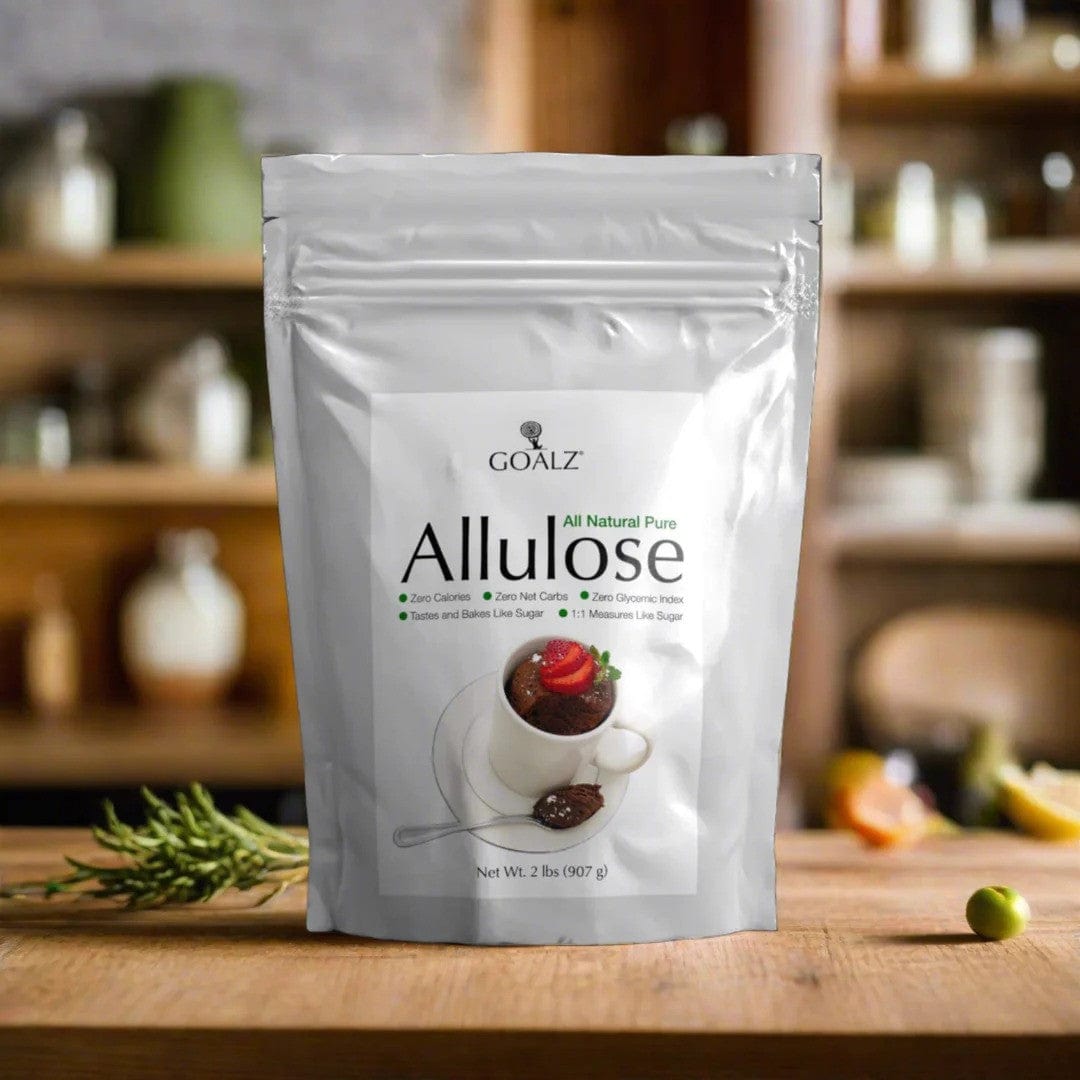What are Carbs?
Carbohydrates, or "carbs" for short, are one of the three macronutrients that provide energy to the body (the other two are protein and fat). Carbohydrates are found in a variety of foods, including grains, fruits, vegetables, legumes, and dairy products, as well as many processed and packaged foods.
Why do some of us limit Carbs?
While carbohydrates are an important source of energy for the body, some people choose to limit them for various reasons. Here are a few of the most common reasons:
-
Weight loss: Some people believe that reducing carbohydrate intake can lead to weight loss, as carbs are a major source of calories in the diet. This can be achieved through diets such as Atkins or ketogenic diets, which limit carbohydrate intake in order to induce a state of ketosis, where the body burns fat for fuel instead of glucose from carbs.
-
Blood sugar control: For people with diabetes or pre-diabetes, limiting carbohydrate intake can be an effective way to manage blood sugar levels. Carbohydrates are broken down into glucose in the body, which can cause blood sugar levels to rise. By reducing carbohydrate intake, blood sugar spikes can be minimized.
-
Food sensitivities or allergies: Some people may be sensitive or allergic to certain types of carbohydrates, such as lactose (found in dairy products) or fructose (found in fruits). In these cases, limiting carbohydrate intake can help reduce symptoms.
-
General health: Some people may choose to avoid or limit carbohydrates for general health reasons, such as reducing inflammation or improving gut health. Some research suggests that high-carbohydrate diets may contribute to chronic inflammation and other health issues.
Commercially processed added sugars should be avoided whenever possible. The American Heart Association advises limiting added sugars—those incorporated into foods and beverages during processing or preparation—to no more than 6 teaspoons per day for women and 9 teaspoons per day for men.
What are Net Carbs?
Net carbs (or Net Carbohydrates) refer to the total amount of carbohydrates in a food or drink that your body can metabolize and absorb, and which can impact your blood sugar levels.
The idea behind tracking net carbs is that fiber and certain sugar alcohols are not fully digested and absorbed by the body in the same way as other carbohydrates, such as sugars and starches. Instead, they pass through the digestive system relatively intact, without significantly impacting blood sugar levels. By subtracting these indigestible carbs from the total carb count, you can get a better sense of the carbs that your body can actually use for energy.
So why do some people track total carbs instead of net carbs? After all the net carbs are the only ones that are absorbed by the body and put to work as a carbohydrate. The main reason some people track total carbs is that it is simpler or more intuitive for them. The fact is that the commercial availability and popularity of low-net-carb foods are recent. They are popularized with the popularity of low-carb diets. Most people with diabetes are used to checking the total carbs (or sugar amount) of the foods and deciding whether to avoid them or not. Another important factor in checking the total carbs instead of net carbs is the game that many food companies played with sugar-alcohols. This created confusion and distrust against the low-net-carb claims of processed food makers. We will talk about the issue with sugar alcohols a little bit here but you can learn more in Michelle Oten's article: Sweeteners Explained: Sugar Alcohols and Keto
What Ingredients are not Absorbed by the Body?
As mentioned above, net carbs are simply the carbs that are absorbed by the body. So, is there a food or ingredient that is not absorbed by the body?
Yes, there are several types of ingredients that are not absorbed by the body or are only partially absorbed. Here are some examples:
-
Dietary fiber: Fiber is a type of carbohydrate that cannot be digested by the body's digestive enzymes, so it passes through the digestive system mostly intact. Some types of fiber, such as soluble fiber, can be partially fermented in the large intestine by gut bacteria, but they are still not fully absorbed by the body.
-
Sugar alcohols: Sugar alcohols are a type of carbohydrate that is only partially absorbed by the body. They are chemically similar to sugar, but the body cannot fully digest them, so they pass through the digestive system mostly intact. This can cause some digestive discomfort for some people.
-
Rare Sugars: Specifically, Allulose or d-psicose is a new type of sugar that exists in nature in very small amounts. It is natural and is not a sugar-alcohol yet it is not fully absorbed by the body. We will talk about this more in this article.
-
Resistant starch: Resistant starch is a type of carbohydrate that resists digestion in the small intestine and reaches the large intestine mostly intact. It can then be partially fermented by gut bacteria, which produces short-chain fatty acids that have various health benefits.
-
Polydextrose: Polydextrose is a type of soluble fiber that is only partially absorbed by the body. It is often used as a low-calorie sweetener and thickener in processed foods.
-
Cellulose: Cellulose is a type of insoluble fiber that is not digested by the body. It provides bulk to the diet and helps promote regularity.
In Food Nutritional Labels, most of these ingredients fall into either the dietary fiber category or are some sort of sweeteners such as Sugar Alcohol, or Allulose. They all have to be listed under the Carbohydrates category on nutritional labels. Let's understand the Carbohydrate category of the Nutrition Facts.
Total Carbohydrates under FDA Nutrition Facts
The US Food and Drug Administration (FDA) requires that food manufacturers include a "Total Carbohydrate" listing on the Nutrition Facts label of packaged foods. This listing includes all of the different types of carbohydrates in a food, including:
-
Dietary fiber: This includes all types of fiber that are not digested by the body, including both soluble and insoluble fiber.
-
Sugars: These include all types of sugars that are naturally present in a food, such as fructose in fruit, as well as any added sugars that are included in the food during processing or preparation.
-
Sugar alcohols: This includes any sugar alcohols that are present in the food, such as xylitol or erythritol.
-
Other carbohydrates: This includes any other types of carbohydrates that are present in the food but do not fall into the above categories.
In addition to the "Total Carbohydrate" listing, the FDA also requires that food manufacturers include a separate listing for "Added Sugars" on the Nutrition Facts label. This listing provides information about how much of the total sugar content in a food comes from added sugars, which can be a helpful tool for people looking to limit their sugar intake.
How to Calculate Net Carbs?
When you purchase a packaged food, you will see a label that shows the Nutrition Facts and Ingredients. This is required by FDA. Under Nutrition Facts you should see a Category called Total Carbohydrates (TC). Under Total Carbohydrates, you may see Dietary Fibers (DF), Sugar Alcohols (SA), or Allulose (AL).
In its simplest form, you can calculate Net Carbs(NC) by subtracting Dietary Fiber, Sugar Alcohols, and Allulose from Total Carbs:
NC = TC - DF - SA - AL
However, you have to be careful about Sugar-Alcohols since some of them may have an impact on blood glucose levels.
The sugar alcohols that can be subtracted from total carbohydrates to calculate net carbs are those that have a minimal impact on blood sugar levels, such as erythritol and xylitol. These sugar alcohols are not fully absorbed by the body, so they don't contribute as many calories as regular sugar, and they don't raise blood sugar levels to the same extent.
However, some sugar alcohols, such as maltitol and sorbitol, have a higher glycemic index and can raise blood sugar levels more than erythritol and xylitol. Therefore, they cannot be fully subtracted when calculating net carbs, and some health experts suggest counting half the amount of these sugar alcohols in net carb calculation. Click Here to Learn More about Sugar Alcohol Net Carbs and Keto.

In the above example, you can see how the Net Carb is calculated in Goalz Keto Chocolates. The total carb amount is 12g with 0g of sugars in it. The Allulose is 6g and subtracted from the Total Carb amount since it is not metabolized by the body. The Dietary Fiber is 5g and is also subtracted from the Total Carb amount since it is not absorbed by the body.
Net Carb Per Serving = 12g - 6g -5g = 1g
Another thing to be careful of when calculating Net Carbs is the serving size. In the Keto diet, you need to limit the Net Carbs you are having per day. Therefore, it becomes important to how many servings you may eat in a day. The serving size displayed on the package may not be reasonable.
Net Carb Limits in Keto
The specific daily macro amount limits for a ketogenic diet can vary depending on factors like age, gender, activity level, and weight loss goals. However, as a general guideline, a ketogenic diet typically involves the following macronutrient ratios:
- Carbohydrates: 5-10% of daily calories
- Protein: 20-25% of daily calories
- Fat: 70-75% of daily calories
Based on a typical 2000-calorie-per-day diet, this would mean consuming approximately 20-50 grams of Net Carbs per day, 100-125 grams of protein per day, and 150-165 grams of fat per day. The actual amounts can be calculated by entering your age, gender, etc into a keto calculator.
It's important to note that the ketogenic diet is a very low-carbohydrate, high-fat diet that is designed to shift the body into a state of ketosis, where it primarily burns fat for fuel instead of glucose.
Net Carb Amounts for Fruits and Vegetables
Not every food comes with a nutrition label. For those cases, here is a list of the net carb content for some common fruits and vegetables (amounts listed are per 100 grams or approximately 3.5 ounces):
Fruits:
- Avocado: 2 grams
- Blackberries: 5 grams
- Blueberries: 12 grams
- Cantaloupe: 8 grams
- Grapefruit: 7 grams
- Grapes: 16 grams
- Kiwi: 9 grams
- Lemon: 2 grams
- Lime: 1 gram
- Orange: 12 grams
- Peach: 9 grams
- Pineapple: 13 grams
- Raspberry: 5 grams
- Strawberry: 5 grams
- Watermelon: 7 grams
Vegetables:
- Asparagus: 2 grams
- Bell pepper: 4 grams
- Broccoli: 4 grams
- Brussels sprouts: 5 grams
- Cabbage: 3 grams
- Carrots: 6 grams
- Cauliflower: 3 grams
- Cucumber: 3 grams
- Eggplant: 3 grams
- Green beans: 4 grams
- Kale: 3 grams
- Onion: 9 grams
- Spinach: 1 gram
- Tomato: 3 grams
- Zucchini: 2 grams
Note that the net carb content can vary depending on the ripeness and preparation method of the fruit or vegetable, so these numbers should be used as a general guide. Additionally, some fruits and vegetables may contain other types of carbohydrates such as sugar alcohols, which may impact the net carb content. You can find more information in Michelle's blog post about Keto-Specific Carb - Calorie - Fiber Sheet.
















Hi Katie
The calorie and other nutrition information for our chocolates are on the product pages in the photos section. Please slide through the photos.
Please provide calories for all of your products.
Leave a comment